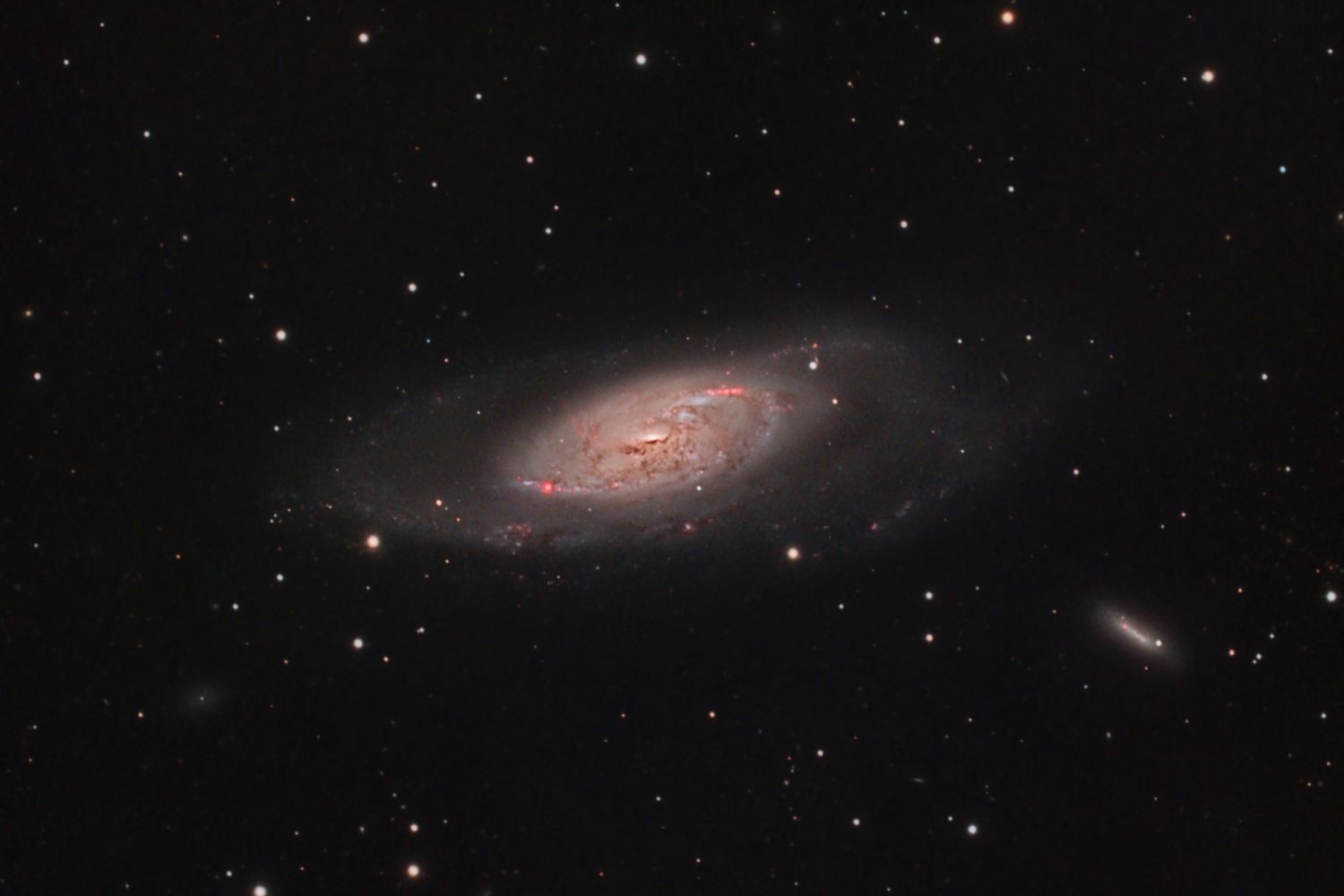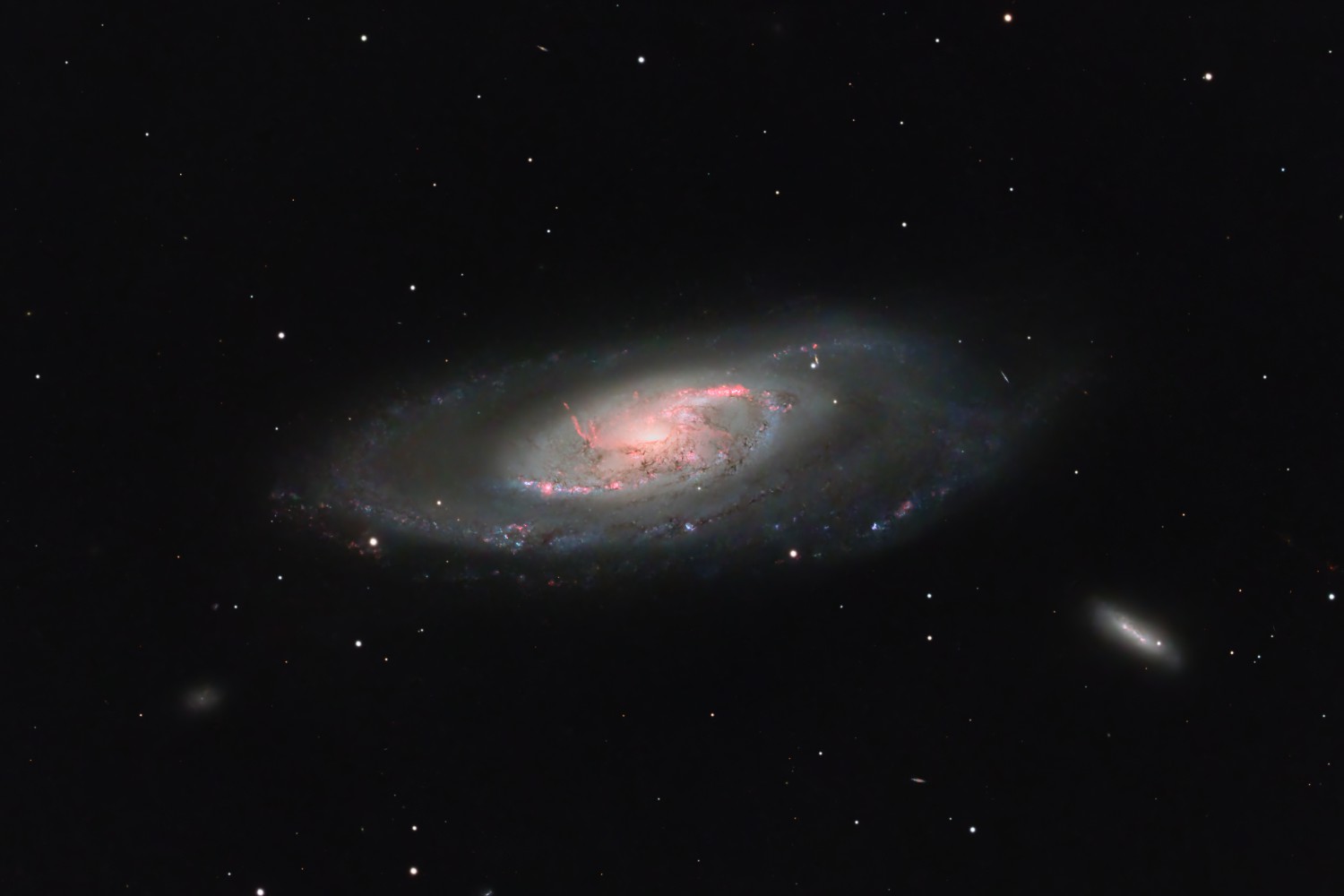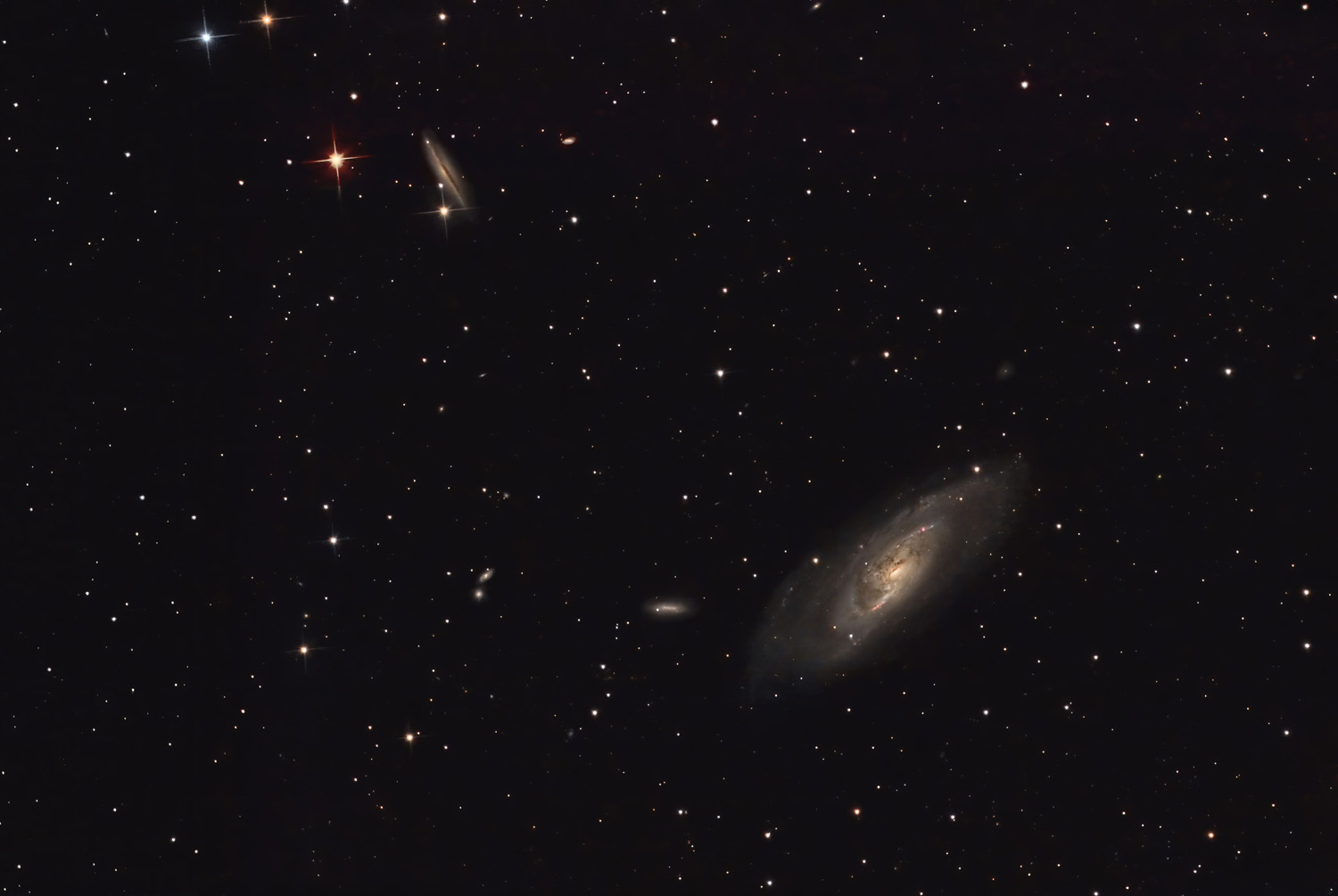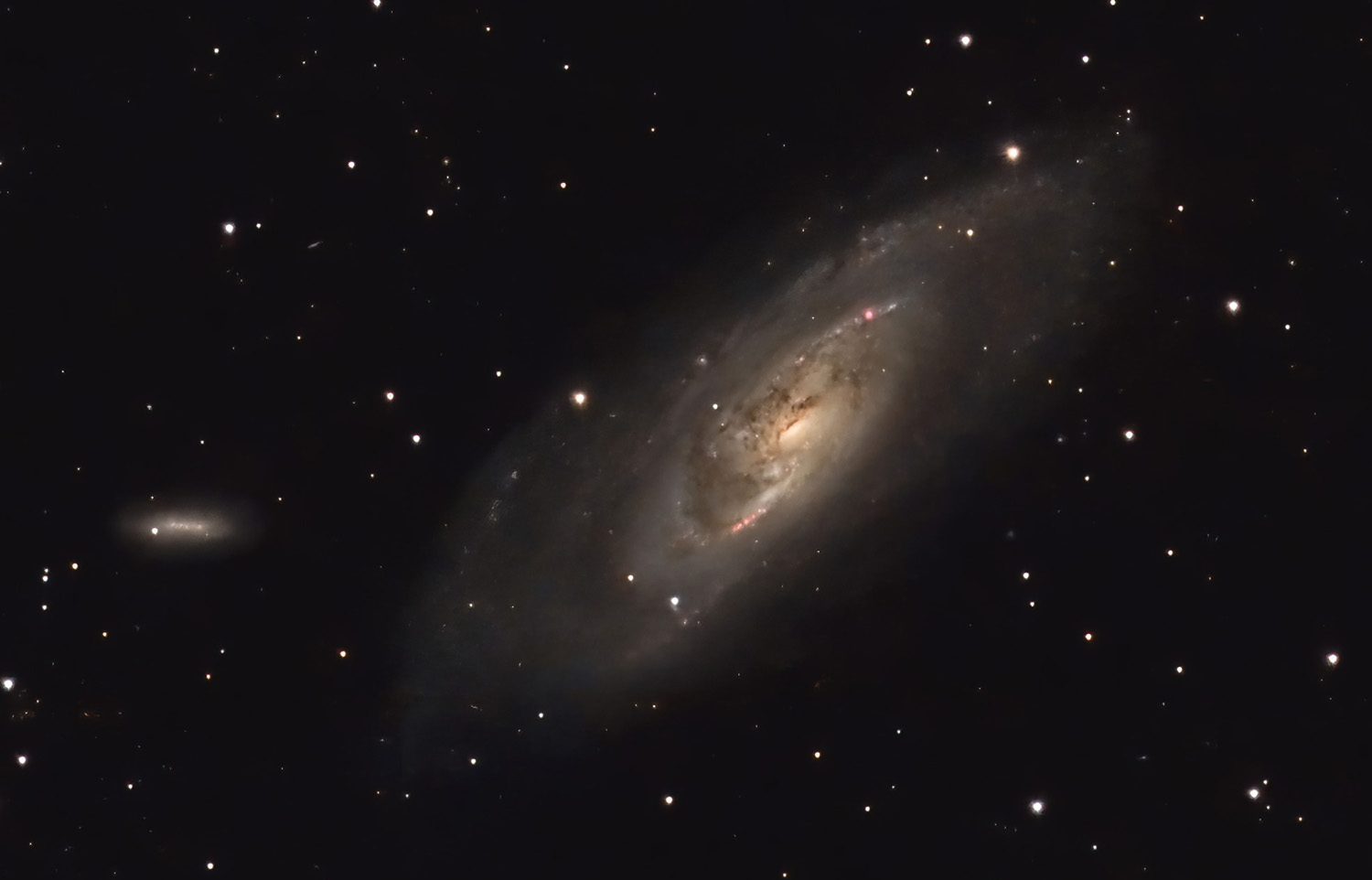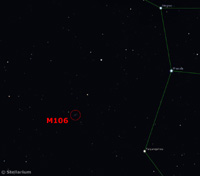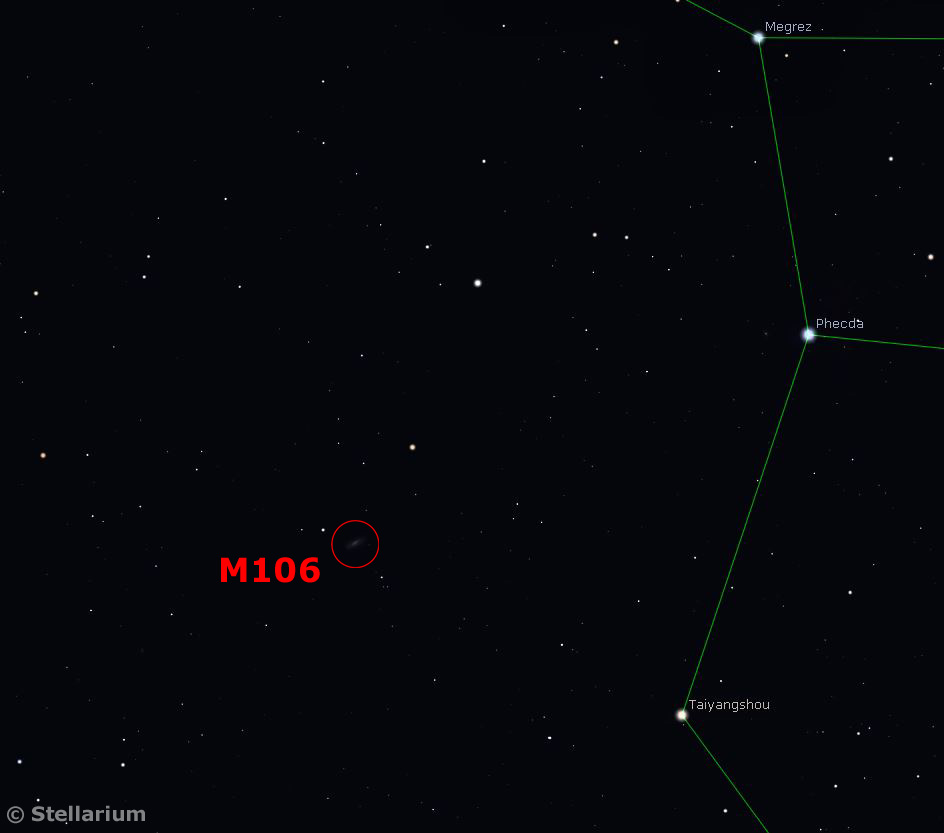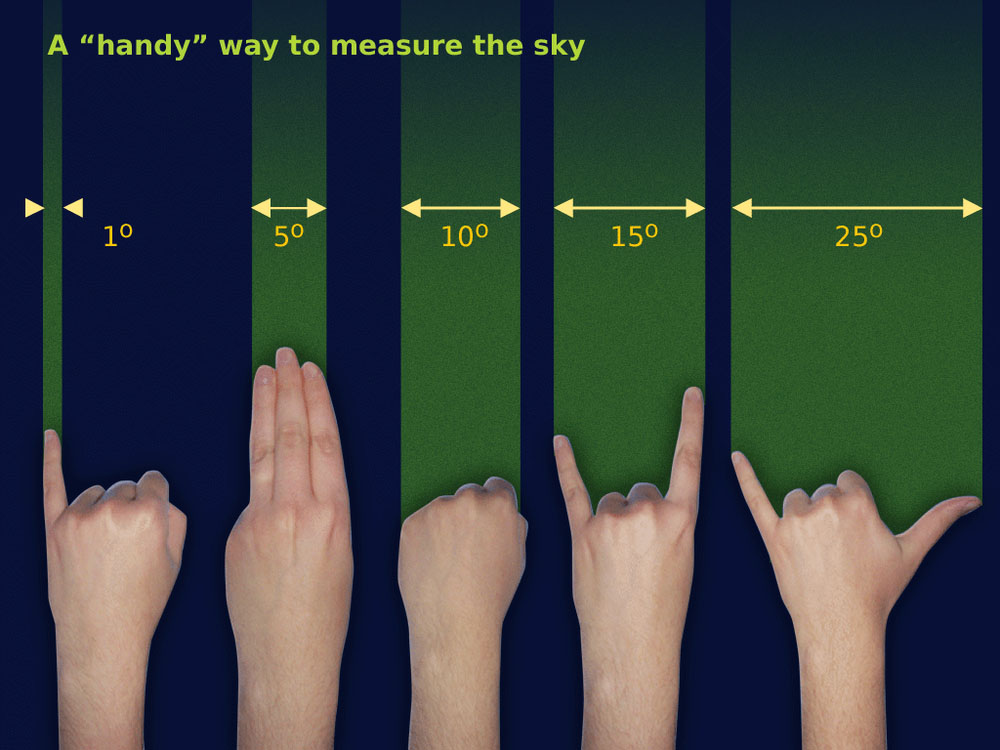Information...
M106, which lies in the constellation of Canes Venatici, is an intermediate spiral galaxy (i.e. one where the central region has a slight 'bar' structure, but which isn't as pronounced as you find in a barred spiral).
It lies at approx 22-25 million light-years from Earth and it's bright active nucleus makes the Galaxy a Type II Seyfert, with a supermassive black hole at the centre. Radio wavelength observations indicate that a disk of molecular gas orbits within 1 light-year of the central black hole.
One charactersistic of this galaxy is the amazing Hα jets, which can be seen in James' combined 2022/23 image. This is the result of over 68 hours exposure (40.5 hours Hα + 14 hours luminance & 14 hours RGB). For higher resolution see James' Astrobin page.
For more info. see the Wikipedia entry.
